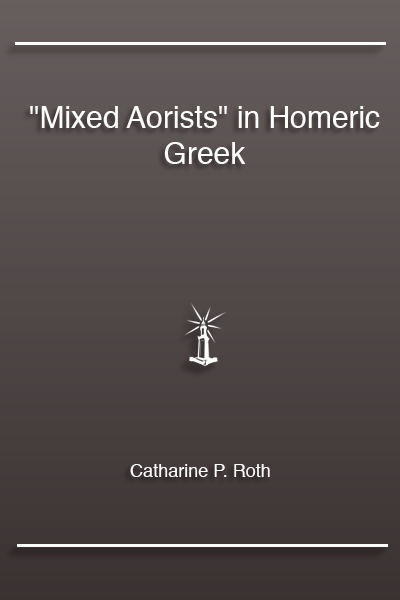“Mixed Aorists” in Homeric Greek
“The Homeric poems provide some of the easiest reading in Greek literature, as well as some of the most rewarding, and so we are introduced to them at an early stage in our study of the language. But when we learn more, we discover that Homeric Greek is not so simple after all. Some of its phenomena remain unexplained after…
“The Homeric poems provide some of the easiest reading in Greek literature, as well as some of the most rewarding, and so we are introduced to them at an early stage in our study of the language. But when we learn more, we discover that Homeric Greek is not so simple after all. Some of its phenomena remain unexplained after two millennia of scholarship. For instance, we come across imperatives like οἴσετε, ἄξετε, ὄρσεο, λέξεο, δύσεο, βήσεο and secondary tense forms like ἄξοντο, ἐδύσετο, ἐβήσετο, ἵξον. When we look in the usual grammar books, Smyth for example,[1] we find these forms labeled “mixed aorists,” and are told that they combine the sigma of the first aorist with the thematic vowel of the second aorist. That description is an admission of ignorance. How could such a “mixture” happen? What kind of process is being attributed to the grammar of the epic language? What is Homeric grammar anyway? How can one tell what is grammatical and what is not?
In order to answer such questions, we must start by understanding the peculiar character of the epic language: its basic units are not so much single words as formulae ready-made to fit various parts of the hexameter verse.”
— From the Introduction
Online version of a 1990 volume in the series Harvard Dissertations in Classics, by Garland Press. Copyright, Catharine P. Roth. Published here with permission of the author.
Use the following persistent identifier: http://nrs.harvard.edu/urn-3:hul.ebook:CHS_Roth.Mixed_Aorists_in_Homeric_Greek.1990.
This work is licensed under a Creative Commons 3.0 License.

